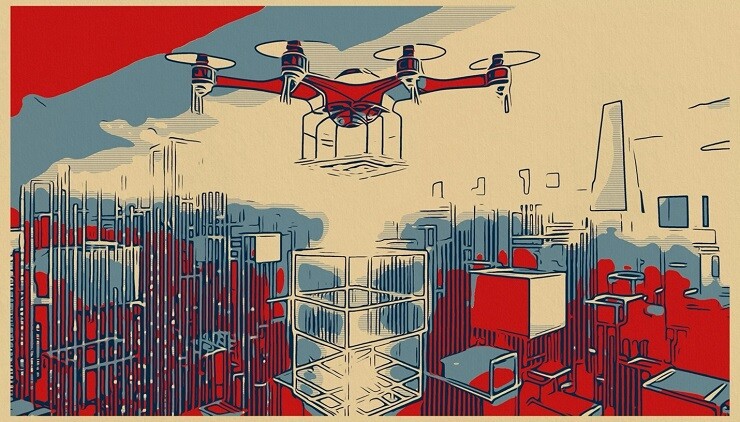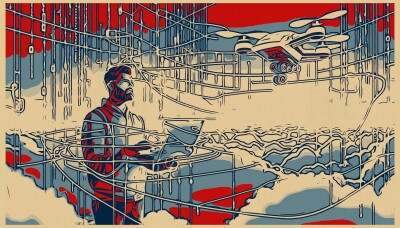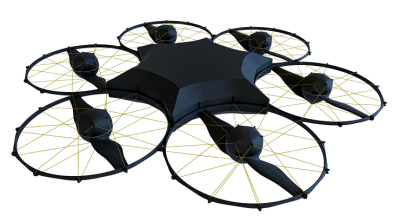There is a lot of talk about AI and Big Data but most of that talk is just noise. Those technologies don’t matter unless you understand what you need in the first place.
The companies that best leverage “AI” and “Big Data” have incredible focus. They know that most data is worthless and so they only leverage data that explains or drives the key metric that drives their business.
What’s a key metric? It depends on the industry. For hotels, it’s RevPAR (Revenue Per Available Room). For Airlines, it’s RASM (Revenue per Available Seat Mile). For e-commerce, its the conversion rate.
Let’s take a quick dive into how a key metric works by looking at RevPAR, the key metric for hotels.
First, some background. Hotel rooms are what economists call “perishable inventory.” If the hotel doesn’t sell a room that evening, it’s gone forever. So every hotel is constantly playing with a mix of room pricing and media to make sure that there are the maximum number of “heads in beds” every night at the highest price possible. Which in turn means that you have maximized the “Revenue Per Available Room” for that hotel.
But wait, you ask, how do you know if you truly have maximized RevPAR? How do you know if the hotel didn’t just sell all its rooms at very low prices to get those “heads in beds”?
It’s the exact reason why RevPAR is so important as the key metric, because hotel owners can then compare RevPAR of one hotel to another hotel (or hotels) - and quickly spot the under and over-performing hotels.
RevPAR also helps guide their AI and Big Data strategy, because the best hotel owners know that they should only leverage data that explains and drives RevPAR, e.g.,
- “Guest Satisfaction Score” data? Yes, because low guest satisfaction scores are directly related to pricing.
- “Large Event” data (e.g., Taylor Swift concert)? Yes, because Taylor Swift rules the world and drives sold out hotel rooms everywhere she goes.
- What about “Weather” data? No, it has almost no impact on pricing.
OK, that’s great, but what is the key metric for drones?
Let’s first dive into some “drone economics.” Whether you are an internal drone department or drone business, drone services are almost always a “firm fixed price” (and not a time and materials). And that means that you only make money (or stay within your budget) if you control your costs.
For example, if you price a project at $10,000 to inspect a building but it only “costs” you $8,000 to do the project, then you’ve pocketed $2,000. (And we recognize that we’re likely insulting your intelligence at this point but, stick with us, we’re almost to our point.)
So the “key metric for drones” clearly needs to include “cost” but what else? Well, you have a drone business or internal drone program to fly…a drone to provide a service. And you want your drone to be in the air doing that service for as long as possible, because, as Matt Koball, CEO of Dropcopter (an agri-business drone operator), states: “We’re only making money when the drone is in the air.”
And so combining “Cost” and “Flight Time” yields the key metric for drone operations: “Cost Per (Flight) Minute” or “CPM.” And CPM = Cost / Flight Time.
Let’s break this down.
What is the “Cost” part of CPM? This is all the obvious direct cost things like your labor costs for the day(s) of the project, the time spent planning for the project, and the cost of gas and the vehicle to get to the project site, but it should also include the full cost of your drone and batteries.
What is the “(Flight) Time” part of CPM? This is the time your drone spends in the air providing the service (and not getting its batteries swapped or flying to and from the site).
Now let’s apply this to an example where the project price (or budget) is $10,000.
Cost:
Direct Labor Costs: $4,000
Travel Costs: $1,000
Drone Cost: $15,000
Battery Cost: $1,000
Total: $21,000
(Flight) Time: 20 minutes (30 minutes total flight but 10 minutes for time to fly back and forth and battery swap).
CPM: $1050 / minute.
You may have noticed that the “Drone Cost” line is $15,000 and the Battery Cost is $1,000. That’s not a typo. You need to use the full cost of the drone and the battery because each flight could be the last for that drone. And, because few drones can be repaired, most crashes result in a complete loss of the drone. An insurance underwriter would make the premiums almost equal the cost of the drone for that very reason.
If you are doing a traditional “Profit & Loss” analysis, this project is clearly in the red by $11,000. But CPM opens up a lot of possibilities for understanding how to drive cost-cutting analysis. For example, if my drone costs half as much and flies for 40 minutes, then my CPM plummets to $337.50. That in turn means you may need fewer employees to run a project because you are swapping batteries less - and then CPM drops even more - which in turn drives profitability.
But there is more to CPM. Just like RevPAR for hotels, CPM allows you to do a direct apples-to-apples comparison of one project to another project, and, more importantly, how certain drones and batteries perform compared to others. That then drives how and what you purchase and your overall cost of ownership.
In the next articles we’ll talk about what other data you should be collecting to further understand CPM and how you should think about data ownership—with some real examples of contractual provisions you should include in your next agreement.
About the Authors:
Justin Call is the Co-Founder and CEO of Modovolo, a start-up that's built a drone to carry any payload for hours instead of minutes at a cost far below anything on the market. You'll want to see it for yourself. He has been an executive at venture capital and private-equity-backed technology and data companies with three exits ranging from $1.5 billion to $130 million. He has deep experience in leveraging data to understand and build businesses.
Eno Umoh is an expert in marketing and business operations and is the co-founder of Global Air Media & The Global Air Drone Academy where he has taught in 26 countries over 18,000 students about drone technology, best practices, and how to make a drone business scale and get to profit. Eno collaborates with drone businesses to help them achieve their goals.
















Comments